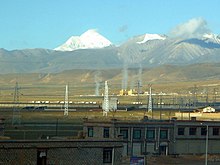Geothermal power in China
It was initially handled by national bodies with public investments, and productive wells were transferred free of charge to the final user.
However, as the living standard of the population has risen, geothermal has found favor in that the waters are used more for health, tourism, and balneology in various hot springs Investors are looking to increase their investment, which has led to an upsurge in geothermal drilling and utilization particularly in the coastal regions of Beijing and Tianjin The Chinese government is culling together plans for comprehensive geothermal development in conjunction with its 13th five-year plan, which covers the years 2016-2020.
As part of this plan, it hopes to develop 100 MW of geothermal by 2015 in northern, central, and southwest China.
For example, in Beijing the total rate of extraction of hot water has been kept stable and has even decreased slightly but energy utilization in terms of GWh produced has increased significantly.
There are about 1,600 public hot spring bathing houses and swimming pools, including about 430 where balneology and medical practices prevail in the country.
